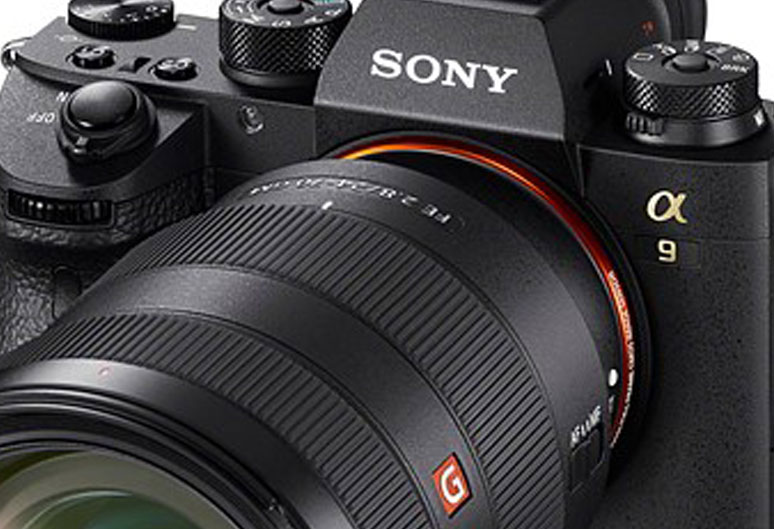The recently released A9, Sony’s latest addition to the Alpha mirrorless series cameras, promises to be the tool of choice mainly for sports photographers. With its unparalleled shooting speeds and autofocusing system that’s able to precisely track objects in fast motion it enters the race with the likes of Nikon D5 and Canon 1D X II, cameras that already have a strong position in the market. So how does it perform?
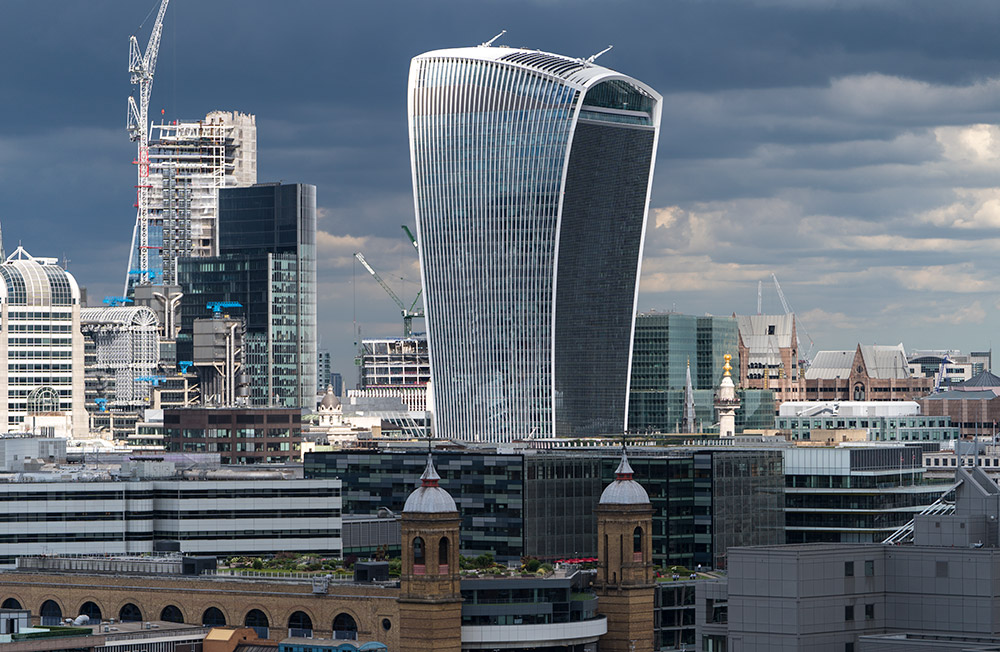 © Jordan Matyka | a9 + 70-200mm ƒ/2.8 GM | 100 ISO, 1/3200s @ ƒ/2.8
© Jordan Matyka | a9 + 70-200mm ƒ/2.8 GM | 100 ISO, 1/3200s @ ƒ/2.8
Jordan Matyka, a professional freelance editorial and music photographer has recently been using an A7s for his work and was delighted when we asked him to review the A9. Here are his thoughts in his own words:
I took it for a day’s shooting in London’s South bank to check it out and also took the opportunity to try the Sony G Master 24-70mm ƒ/2.8 & 70-200mm ƒ/2.8 lenses. I was particularly interested to see the telephoto’s ability to work with the camera’s AF tracking as this is the longest native lens currently available for the system, until the recently announced 100-400mm ƒ/4.5-5.6 GM OSS becomes available.
Also, as an (soon to be) ex-Nikon shooter, I’ve tried to outline the pros and cons between the two systems to make it easier for anyone thinking of making the switch. But let’s go through the basics first.
Features
The A9 is currently the flagship model in the full-frame Alpha series. A lot of people are very confused about the lineup as at first glance; the differences aren’t obvious but they can be simplified down to the following:
- Alpha 7 and 7II – good all-rounder, mid-resolution (24MP)
- Alpha 7r and 7r II – high resolution (36 and 42MP respectively)
- Alpha 7s and 7s II – low resolution (12MP), fantastic high-ISO quality
There are other differences, especially in the AF and video specs and capabilities, but I think the above outlines the key areas of interest.
The new A9 on the other hand, being the flagship model, encompasses all of the above in one package. The 24 megapixel provide files big enough to satisfy most studio photographers. It’s BSI (back-illuminated) CMOS sensor provides low-noise images when using high-iso and also expands the dynamic range – this will be a huge benefit to anyone working in low light but also to sport shooters as it gives the opportunity to use higher shutter speeds, especially when using lenses without particularly low aperture.
The sensor combined with BIONZ X image processor allows the camera to produce 20 compressed RAW shots per second when using the electronic shutter. That’s 6 more than the D5 and 4 more comparing to 1D X MkII. It may not seem like a lot, but having these few more fps in a critical moment may be decisive. The camera does that with absolutely no viewfinder blackout meaning that you can focus on what’s in front of you without any distractions. The buffer can hold about 250 consecutive shots (that’s over 12 seconds of non-stop shooting) before it starts to clear. Using a Class 10 300MB/s SD card it only takes about 3 seconds to clear approximately 50 images meaning that you can capture an action sequence and almost immediately continue with another one.
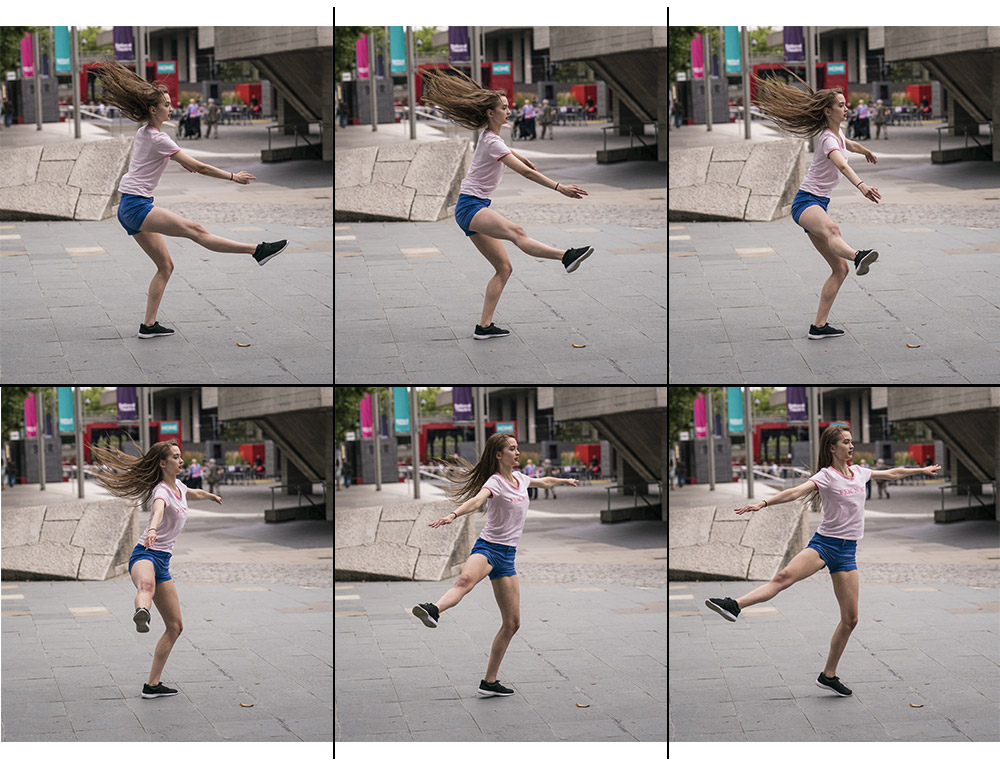 © Jordan Matyka | A9 + 24-70mm ƒ/2.8 GM | 1000 ISO, 1/12,800s @ ƒ/2.8
© Jordan Matyka | A9 + 24-70mm ƒ/2.8 GM | 1000 ISO, 1/12,800s @ ƒ/2.8
A series of frames shot with the electronic shutter at a higher than usual shutter speed.
Speaking of the viewfinder, a lot of DSLR users are wary of electronic models as opposed to the optical ones they’re used to. After years of seeing not-so-good examples of these on different compact and mirrorless cameras I can fully appreciate this. However, it’s not the case here. Looking though the A9’s EVF is a pleasure – it refreshes at 120 frames per second and has a 3.68 million dot resolution providing a very smooth and extremely detailed view of the action.
There’s another advantage of using an EVF over classic optical – exposure preview. Yes, if you’re a pro you will know what you’re doing and rarely set this incorrectly, but we all sometimes make mistakes and this feature provides a backup for these situations. Secondly, when shooting in extreme low light it allows you to see things that would be impossible to notice when using a traditional DSLR.
However, as pretty much anything in this camera, the EVF exposure preview can be customised or turned off altogether and you can shoot the way you’re used to. It’s also worth mentioning that the viewfinder covers 100% of the frame so critical framing is not a problem and will especially benefit architectural and studio photographers.
Design & Operation
Mirrorless cameras are small; the A9 is roughly the same size as the A7 II series bodies. When compared to the flagship Canon and Nikon models it dwarfs at about half the size. This can be a good or a bad thing, depending on the type of work you’re doing and, well, your hand size. Being 6’ 5” with palms to match I found the body just a bit too small with my pinky sliding just beneath the battery compartment. Sony’s GP-X1EM grip extension rectifies this and there’s also the VG-C3EM battery grip that makes the whole setup a lot more comfortable to use.
The body, at 673g, is just over half the weight of the aforementioned models. Again, the advantage of this may be questioned especially by sport shooters using big lenses, but having walked all day with the 70-200mm attached to it I did not feel the imbalance reported by other people. This is, of course, a matter of personal preference, but I’ve found that combination to be pretty well balanced and the lens did not feel too big at all for the body. The metal lens mounts feel secure and even without supporting the lens it feels like it can withstand even rough handling that pros often expose the gear to.
Which brings us to the build quality. Nikon’s D5 can take pretty much anything you throw at it. Similarly, the A9 is constructed from magnesium alloy and Sony lists weather sealing as a feature. However, a closer look at different openings such as the card slots cover and I/O ports reveals lack of rubber outlines which would make me cautious of taking it out into the rain. That being said, the camera has only been out for few weeks and durability can only be tested over time so we’ll have to wait to make a judgment.
Even though the body is small, Sony managed to place dedicated, essential controls outside so there’s no need to wander around the menus to find the desired function. Four custom-function buttons can be assigned to perform different operations so even when there’s something missing, you can add it yourself. The menu system may feel a bit overwhelming at the start but the often used points are easy to find and the redesigned interface and customisable ‘My Menu’ section help to move around quickly. The camera offers a great number of tweaks which can be applied that, with a little bit of practice, can greatly improve the experience and help to make the most of the system.
Autofocus
The new AF system on the A9 is simply outstanding. 693 focusing points cover 93% of the frame and with 60 calculations per second it can track fast moving objects with staggering precision, right to the edge of the frame. When testing this with the 70-200mm I often found myself not being able to keep up with the subject’s movement when the camera kept the focus locked regardless of the subject’s movement within the frame. I’m not a sports photographer but someone experienced in the field will surely be able to use their experience combined with the AF system’s capabilities to capture pin sharp series of photos and pick ones that they need.
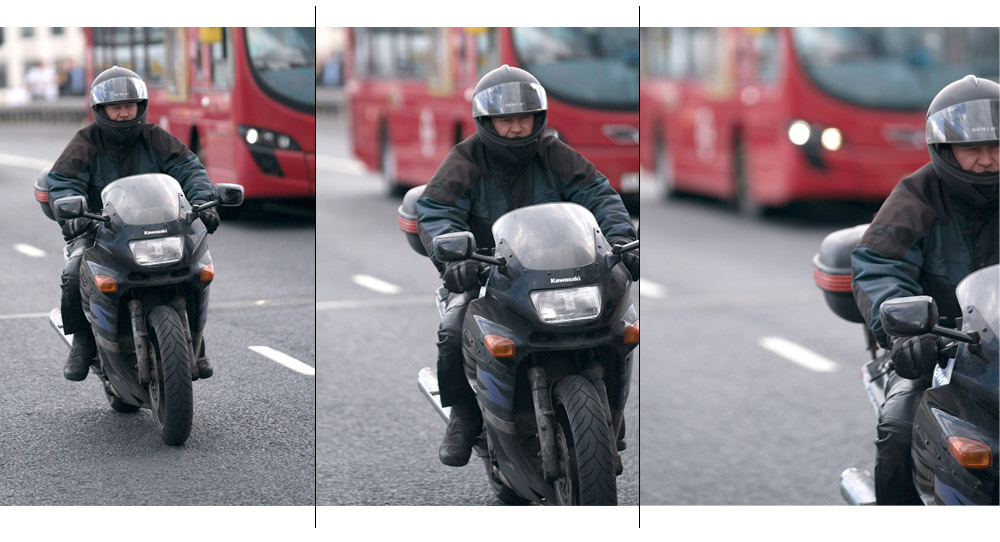 © Jordan Matyka | A9 + 70-200mm ƒ/2.8 GM | 400 ISO, 1/2000s @ ƒ/2.8
© Jordan Matyka | A9 + 70-200mm ƒ/2.8 GM | 400 ISO, 1/2000s @ ƒ/2.8
Even as the motorbike leaves the frame, the focus hasn’t switched to the bus behind.
During many attempts to test the limits of the system I’ve rarely found out-of-focus shots afterwards. Shooting at 20fps it only takes the camera a handful of frames to refocus on the subject and after that it tracks it without fail. Even in situations when another object moved in between myself and whatever the AF locked on, it kept the focus spot-on.
Zooming in or out on the subject whilst tracking– also a difficult ask for some cameras – proved not to be a problem for the A9.
The only tricky moment was shooting against strong backlight when the amount of misfocused shots was higher than normal but this would prove difficult for any AF system so I won’t deduct any points here.
A type of focus mode worth mentioning is the Eye AF introduced earlier in the A7 models. Face detection is something that we’ve already seen on some compact, mirrorless and even DSLR models but the A9 takes it to another level with phase-detection continuous AF. In this mode the camera will focus on the subject’s face if it’s too far to find the eye, but if the subject is close enough for the feature to be distinguishable it will lock on the eye and keep tracking it flawlessly. Combine that with another great property – the ability to switch the focusing points within the frame if you change from portrait to landscape orientation – and it’s something that portrait photographers will absolutely love. No more focus locking and re-framing – you can just keep on shooting and every photo will be focused on the subject’s eye.
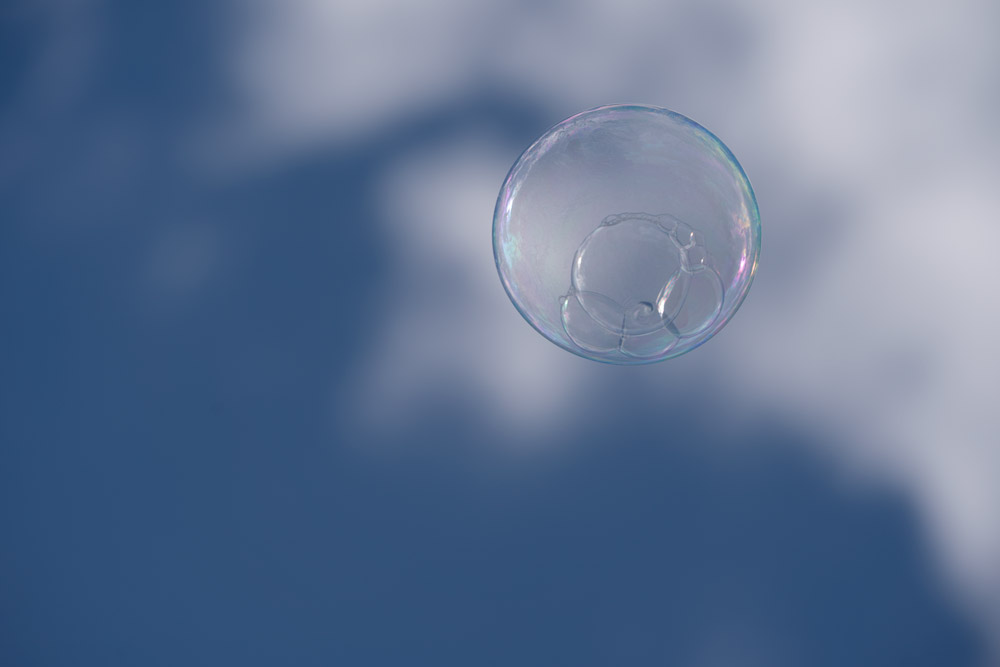 © Jordan Matyka | A9 + 70-200mm ƒ/2.8 GM | 100 ISO, 1/800s @ ƒ/7.1
© Jordan Matyka | A9 + 70-200mm ƒ/2.8 GM | 100 ISO, 1/800s @ ƒ/7.1
This shot of a bubble was part of a 33 frame sequence where all but 2 of the images kept focus, despite the bubble drifting out of the frame a few times.
Sony provides a detailed guide to the system, with recommended settings for different shooting scenarios that greatly help to set the camera up, without having to go though a tedious trial-and-error process. The guide can be found here.
Image Quality
The A9’s 24MP sensor is capable of producing 14-bit uncompressed RAW files, weighing about 50MB each, as opposed to 24MB compressed ARW (Sony’s RAW format). Such resolution may seem like not a lot these days, with some cameras going way beyond that, even in the Alpha lineup, but it’s a good compromise as higher resolution would hinder it’s low light performance. Using it in this mode limits the fps to 5 which is still very good, considering that it will only be required by studio, landscape or architecture photographers not in need of the highest frame rate.
Regardless of whether you use the compressed mode or not, the output files have great amount of detail, colour reproduction is accurate and there’s enough dynamic range to allow you to pull the shadows up in your image editing software.
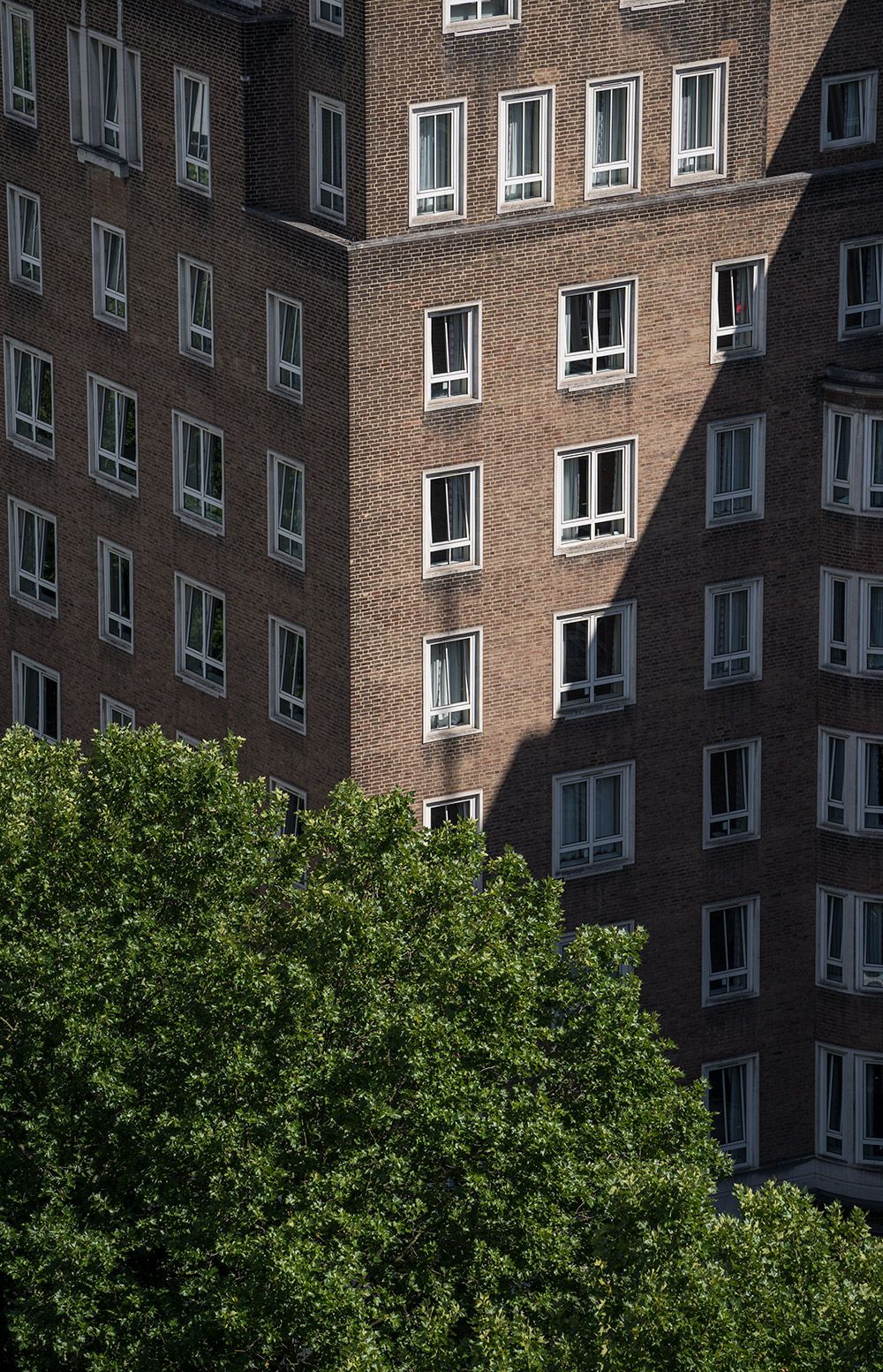 © Jordan Matyka | A9 + 70-200mm ƒ/2.8 GM | 100 ISO, 1/800s @ ƒ/5
© Jordan Matyka | A9 + 70-200mm ƒ/2.8 GM | 100 ISO, 1/800s @ ƒ/5
The A9 seems to cope well with a wide dynamic range of tones.
The best results are of course achieved with Sony’s G-Master series lenses. The whole family of these proved to resolve at the highest level when used with the A7r II model (42MP) and are reportedly designed to be able to go way beyond that resolution, which makes them future-proof should – or rather, when – an even higher resolution model arrives.
Almost zero aberrations were noticed on all the images I shot. Colour fringing was virtually non-existent, even wide-open at ƒ/2.8 and the same for moiré. Both lenses were used without hoods and even then, on a bright and sunny day, there were only a handful of shots with flare.
One thing that many mirrorless users were complaining about is banding. It is a phenomenon when, under certain conditions, the image will have off-coloured stripes running along the long edge of the frame. It can happen under certain types of artificial light (mainly LED), at very high shutter speeds, high ISO and mainly when using the electronic shutter. And even if these conditions are met, not all shots will suffer from the problem. Out of several thousand shots I’ve so far taken with the A9, only a few, shot at a concert under very difficult artificial light had the banding visible at a level that was causing a problem.
In terms of low light, high ISO quality, the A9 performs really well. Not as good as its older siblings, the A7s and A7s II, but these were designed to specifically tackle this particular area. It’s got quite a way to go to compete with the D5 but the top-range Nikon models were always a benchmark for high ISO performance. It’s worth mentioning that the D5’s sensor comes from Sony so this seems like a matter of image processing engine, not the actual hardware.
Battery life & other features
Another bane of the previous Sony Alpha models users was the battery life. A smaller body means a smaller battery and previously it was only possible to shoot a few hundred shots before seeing the empty flashing symbol on the screen. For a professional series camera this is hardly acceptable, especially considering that the Nikon D5 and Canon 1D X II can shoot a few thousand shots on a single charge.
With the A9 Sony has improved this greatly. The 2280mAh NP-FZ100 battery has more than double the capacity of the previous ones which places it close to the other big players. With 2 of these batteries inside the VG-C3EM grip I was able to shoot nearly two thousand images and still had 30% juice left. This was with with the screen turned on most of the time and all the bells and whistles like AF tracking, 20fps etc.
What most people forget about when complaining about short battery life on mirrorless cameras is how these camera actually work – not having a mirror means that what you see in the viewfinder comes from the sensor that’s in practice turned on all the time. It’s worth remembering that all the benefits of having a pro-quality, small and lightweight camera come at a small cost.
The camera has a built-in 5-axis image stabilisation that Sony claims to offer a 5-stop speed advantage. Using this with the 24-70mm ƒ/2.8 at the widest angle, I was able to handhold a sharp 0.8sec long exposure, something previously impossible with a DSLR due to the mirror slap and vibration from the shutter.
You will also find features expected from a pro-series camera like dual card slots and a LAN connection but also Wi-Fi, NFC, HDMI output, sync terminal, mic and headphone sockets.
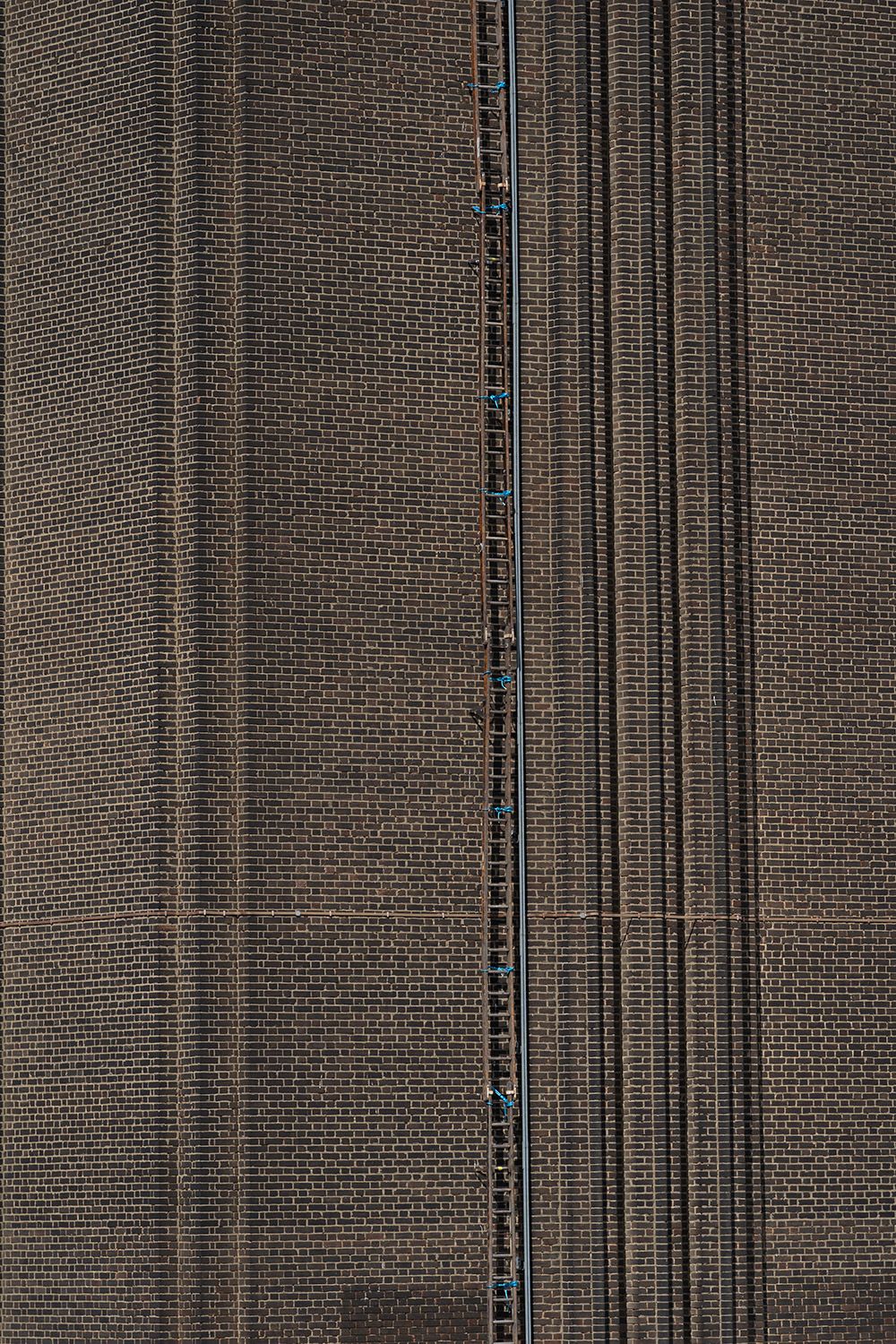 © Jordan Matyka | A9 + 70-200mm ƒ/2.8 GM | 100 ISO, 1/800s @ ƒ/5
© Jordan Matyka | A9 + 70-200mm ƒ/2.8 GM | 100 ISO, 1/800s @ ƒ/5
The G Master 70-200mm ƒ/2.8 performs well at relatively wide apertures and the camera is showing no obvious signs of moiré.
The last two things I’d like to mention are relatively small features, though offering great benefits for certain situations. The first one is the tilt screen. A lot of people see this as a gimmick but will appreciate it when shooting from low or high angle. It’s also really well made and I was at no point worried that it could snap. The second one is something that myself and many other Sony Alpha users just love: a totally silent electronic shutter. Being able to take photos with a camera that’s 100% silent (and yes, the lenses focus and zoom without a squeak) opens up many possibilities that were in the past reserved for either rangefinder cameras (contrary to popular belief not completely silent) or DSLRs encased in cumbersome, difficult to use and expensive blimps. Shooting reportage, performance, theatre, events, interviews, street and film sets suddenly does not require changing the way you’d normally work. The rear screen can be turned off with the viewfinder taking over its role when you’re not shooting so you can be quiet but also invisible as there will be no screen glow.
Conclusion
The Sony Alpha A9 is a fantastic camera. It offers almost all the qualities of the bigger, heavier and more expensive competitors from Nikon and Canon and in some areas it surpasses them. Users of these systems will possibly look at the current FE lens range with a smirk but Sony’s quickly expanding lens range already offers some outstanding glass that in some cases outperforms the rivals. There’s always the possibility of using your existing lenses via adapters, some of which offer fast AF and stabilisation (!), especially with Canon’s EF series lenses.

